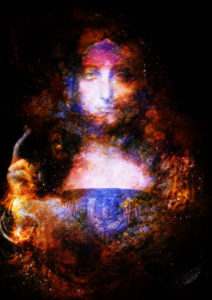The Psychedelic Pendulum and Psychiatry, Part 1
In November of 2020, Oregon became the first state to legalize the use of psilocybin in therapeutic settings. Measure 109 created a two-year time period during which regulatory details were to be worked out by the Oregon Psilocybin Advisory Board (OPAB). These details would include issues like what qualifications would be required of therapists overseeing those who chose to use psilocybin. Significantly, psilocybin treatment will not be limited to individuals struggling with mental health issues. Anyone 21 or older who passes a screening will be able to access these psychedelic services for “personal development.”
The first draft of rules recommended by the OPAB were made public in February of 2022. Manufacturers will only be permitted to cultivate one of about 200 different types of mushrooms containing psilocybin, Psilocybin cubensis. Some people were concerned with this recommendation, believing the board was also limiting potential benefits. “It is believed that different species promote different types of experiences.”
Psilocybe cubensis was chosen because it’s one of the most popular mushrooms consumed and one of the most studied. Advisory board members also thought that it would be best to start simple, with one mushroom. Other species might be introduced later.
The OPAB also recommended a ban on growing Psilocybe cubensis in wood chips. This is to prevent a rare condition known as wood lover’s paralysis that produces muscle weakness a few hours after hallucinogenic mushrooms grown in wood chips are consumed. Scientists don’t know why this condition occurs. “But it isn’t believed to happen with Psilocybe cubensis.”
The rules also prohibit the chemical synthesis of psilocybin. Measure 109 also requires the state to only license people to set up grow operations who have been Oregon residents for at least two years. Well, at least until 2025. These recommendations are attempting to allow small farmers to set up grow operations and limit the ability of large pharmaceutical companies to move in and potentially dominate the market.
There are other reasons for banning synthesized psilocybin. The synthesis requires using toxic chemicals that have to be extracted before sale so there’s no residue in the final product. Mason Marks, a member of the OPAB, said synthesizing psilocybin is a huge undertaking. “There was some sentiment that that might be maybe unrealistic or overly burdensome, at least initially to expect people to have that level of expertise or equipment in order to do that.”
Manufacturers will have to use clean, food-grade equipment in an area that can be locked. They won’t be permitted to make psilocybin products that may appeal to minors, like in the shape of cartoon characters. Psilocybin is only permitted to be used orally—not with an inhaler, a suppository or an injection. Students will have the opportunity to observe “non-ordinary states of consciousness.”
Facilitators (not therapists?) will have to take at least 120 hours of instruction, covering everything from the history of psilocybin use to safety concerns. They will have to have sufficient experience to teach classes for individuals interested in trying psilocybin. But what about ethical expectations and boundaries with clients under the influence?
Therapeutic facilitators of individuals doing psychedelic therapy from the time of its origins in the 1950s recommended two therapists, one male and one female. This was to minimize the possibility of sexual exploitation of the clients when they are under the influence of psychedelics. More about this in part 2 of the article.
These draft rules need to be discussed and adopted by the Oregon Health Authority. Other rules are still pending, such as how research with psilocybin should be conducted, and the conditions (i.e., schizophrenia) that would prohibit people from trying psilocybin treatment. There are more complicated issues that need to be decided as well. There’s a desire to permit microdosing psilocybin (taking one-tenth or one-twentieth of a normal dose), over a few days. This practice is thought to boost creativity and focus, as well as alleviate depression.
Oregon’s psilocybin system is scheduled to begin in 2023. The Oregon Health Authority will begin taking applications for licenses to manufacture, transport, deliver, sell and purchase psilocybin products on January 2, 2023.
Psychology Today has a page that introduces the reader to “Psychedelic-Assisted Therapy,” giving information on the most common psychedelic substances, their general effects and properties, as well as potential harms and proposed therapeutic uses. It also has a section on “Understanding Microdosing.” The most common psychedelic substances listed on the page were: psilocybin, LSD, ayahuasca, mescaline and MDMA. All but MDMA listed psychosis as a potential harm. Therapeutic uses being investigated include: PTSD, addiction to alcohol, tobacco and cocaine; anxiety associated with terminal illness; depression and general anxiety.
Dependence or substance misuse is not listed as a potential harm for any of the psychedelics, which do have a low risk for addiction. But the repeated therapeutic use of psychedelics increases the ritualized, long-term use of these drugs, and raises the possibility of misuse or dependence problems developing in users over time.
Information on microdosing said there was some evidence of positive effects performance and creativity, but it was mostly anecdotal. One 2018 study published in the journal Psychopharmacology, “Exploring the effect of microdosing psychedelics on creativity,” found support for its cognitive enhancing properties, but fluid intelligence was unaffected. The researchers concluded that while large doses of psychedelics can introduce several undesirable side effects, microdoses might be an alternative that could eliminate the risks of these side effects, while maintaining the benefits on emotion and thinking.
A 2016 study by Roland Griffiths et al, also published in the journal Psychopharmacology, found that when a high dose of psilocybin was administered to patients with a life-threatening cancer diagnosis under supportive conditions, there were “substantial and enduring” decreases in depressed mood and anxiety. It also resulted in increases in measures of quality of life, life meaning, the acceptance of death, and optimism. The effects were sustained for six months.
There has been a veritable flood of articles and research on the supposed benefits of psychedelics, particularly psilocybin and MDMA, over the last several years besides these two Psychopharmacology studies. In 2019, the FDA designated psilocybin therapy as a breakthrough therapy for Usona Institute, the second pharmaceutical company to gain such an approval in that year. The first company, Compass Pathways, is looking at how psilocybin may help with treatment-resistant depression, that is patients who have not improved after trying two different antidepressants. The significance of the second FDA breakthrough approval is related to how it expands the potential market from the relatively small population of individuals struggling with treatment resistant depression to the estimated 17 million with major depressive disorder, according to a statement by Usona:
This is a significant milestone for the over 17 million people in the US who suffer from MDD. Although there are several existing MDD treatments, Breakthrough Therapy Designation recognizes that psilocybin may offer a clinically significant improvement over these therapies. Psilocybin potentially offers a novel paradigm in which a short-acting compound imparts profound alterations in consciousness and could enable long-term remission of depressive symptoms.
Dr. Samoon Ahmad provided a helpful description of how psilocybin affects the brain in a Psychology Today article, “Understanding the Buzz About Magic Mushrooms.” He said psilocin, not psilocybin, seems to be the substance responsible for the psychoactive effects of “magic mushrooms.” Psilocybin and other psychedelics like LSD and mescaline activate the 5-HT1A and 5-HT2A receptors in the prefrontal cortex, which in turn has downstream effects on serotonin and dopamine. “The increase in dopamine is believed to be part of the reason for some of the psilocybin’s effects on mood, such as euphoria, and the commonly reported phenomenon of depersonalization.”
He said the probability of serious adverse events and abuse of psilocybin was low when compared to other classes of abused drugs. The association of the lifetime use of psychedelics and an increased likelihood of mental illness or suicidality “simply does not exist,” according to Ahmad. By associating “lifetime use of psychedelics” and an “increased likelihood of mental illness or suicidality,” Ahmad’s sidesteps how psychedelics can be destabilizing for some individuals who have a past history of psychotic disorders like schizophrenia. See Part 2 for more information on concerns with psychedelic psychotherapy.
Psilocybin can also produce side effects like hypertension, nausea, vomiting, anxiety, confusion and more. Ahmad also pointed out the importance of “set and setting,” the individual’s mindset and their environment.
A positive experience may inspire life-changing epiphanies and grant individuals a greater perspective on life. A negative experience may result in disturbing thoughts or hallucinations, which may lead to anxiety, disorientation, delirium, and, in extreme circumstances, temporary psychosis. Researchers have found that they can significantly diminish the likelihood of negative experiences by providing patients with more preparation and interpersonal support during the period of drug action.
There is still a risk if the interpersonal support is inadequate or inappropriate—not respecting clear, therapeutic boundaries between the support person and the client. And the preparation may not get the person ready for the actual psychedelic experience. Careful attention to the “set and setting,” the inner and outer environments of the drug event, is crucial for a positive experience.
Ahmad said research has shown that psychedelics hold a great deal of promise, “as long as they are administered in a controlled and clinical environment or under the guidance of individuals who are experienced in the use of psychedelics.” But stigma surrounds the use and research into these drugs. His hope is that there will be a loosening of restrictions and regulations in the U.S. as there is more research published, “and the case for the use of psychedelics becomes stronger.”
Dr. Ahmad and researchers like Roland Griffiths (see this Google scholar link for “Roland Griffths psilocybin”) are representative of those who see the potential for psychedelic therapy, particularly with psilocybin. Rick Doblin and his organization MAPS (Multidisciplinary Association for Psychedelic Studies) are attempting to bring MDMA to market as a treatment for PTSD see this Google scholar link for “Rick Doblin MDMA”). British researchers including Robin Carhart-Harris and David Nutt want to treat depression with psilocybin. Michael Pollan, author of a best-selling book on psychedelics, How to Change Your Mind, thought there has been a sea change in attitudes towards psychedelics. In “The Psychedelic Revolution Is Coming,” he said, “Given the mental health crisis in this country, there’s great curiosity and hope about psychedelics and a recognition that we need new therapeutic tools.”
But what are the risks in turning to psychedelics like psilocybin and MDMA as the next great hope in psychiatric drug treatment? As Andrew Jacobs noted in his NYT article, “The Psychedelic Revolution Is Coming,”
The question for many is how far — and how fast — the pendulum should swing. Even researchers who champion psychedelic-assisted therapy say the drive to commercialize the drugs, combined with a growing movement to liberalize existing prohibitions, could prove risky, especially for those with severe psychiatric disorders, and derail the field’s slow, methodical return to mainstream acceptance.
We’ll look at some of the concerns others see with the growing move towards psychedelics as the newest fad in the pursuit of therapeutic tools in Part 2 of this article. For more information on psychedelics as therapy, see the following articles on this website: “Psychedelics Are Not a Magic Bullet,” “The Long, Strange Trip of Psychedelic Psychiatry,” “Give MDMA a Chance?,” and “Psychedelic Renaissance?”





